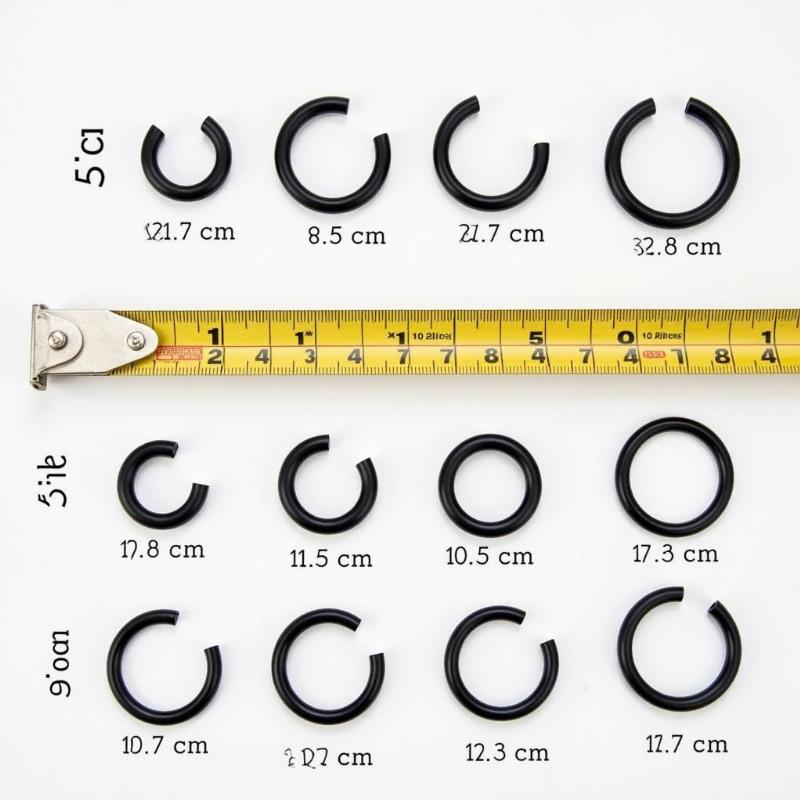D-rings are an essential component of most dog collars, serving as the point of attachment for leashes, tags, and other accessories. Choosing the right d-ring is crucial for your dog’s safety and comfort. This guide will explore everything you need to know about d-rings for dog collars, from materials and sizes to placement and durability, empowering you to make the best choice for your furry friend.
Choosing the Right D-Ring Material
The material of your dog’s collar d-ring significantly impacts its durability, weight, and resistance to rust and wear. Common materials include:
- Stainless steel: A popular choice for its strength, corrosion resistance, and sleek appearance. Stainless steel d-rings are ideal for active dogs and harsh weather conditions.
- Welded steel: While less expensive than stainless steel, welded steel is more prone to rust and may not be as durable in the long run.
- Brass: Offers a classic, elegant look and is relatively durable. However, brass can tarnish over time and may not be suitable for dogs with sensitive skin.
- Plastic: Lightweight and affordable, plastic d-rings are generally not as strong as metal options and are best suited for small dogs or lightweight collars.
Which material is right for you? Consider your dog’s size, activity level, and the environment they frequent. For large, powerful breeds or dogs that love to swim, stainless steel is the optimal choice.
Sizing Up the Perfect D-Ring
D-ring size should be proportional to your dog’s size and the width of the collar. A d-ring that’s too small can be difficult to clip a leash onto, while a large, heavy d-ring can be uncomfortable for a small dog. Measure the width of your dog’s current collar and choose a d-ring that is slightly smaller in width.
 Different D-Ring Sizes for Dog Collars
Different D-Ring Sizes for Dog Collars
D-Ring Placement: Function and Fashion
While most collars place the d-ring near the buckle, some designs feature multiple d-rings for attaching accessories or a centered d-ring for a martingale-style collar. Consider the purpose of the collar and your dog’s training needs when choosing a collar with a specific d-ring placement. A centered d-ring can provide more control, while a collar with multiple d-rings offers versatility.
Durability and Safety: Keeping Your Dog Secure
The d-ring is a critical safety component of your dog’s collar. Ensure it’s securely attached to the collar and shows no signs of wear or damage. Regularly inspect the d-ring for cracks, bends, or rust. A compromised d-ring could fail, leading to your dog getting loose.
Conclusion: Choosing the Right D-Ring Matters
Selecting the right d-ring for your dog’s collar is a small detail that can make a big difference in their safety, comfort, and overall well-being. By considering the material, size, placement, and durability, you can ensure your furry friend’s collar is equipped to handle all their adventures.
FAQ
- What is the most durable d-ring material? Stainless steel is generally considered the most durable d-ring material due to its strength and corrosion resistance.
- How do I choose the right d-ring size for my dog? Choose a d-ring slightly smaller in width than your dog’s collar.
- Where should the d-ring be placed on a dog collar? Most collars have the d-ring near the buckle, but some designs have variations depending on the collar’s purpose.
- How often should I inspect my dog’s collar d-ring? Regularly inspect the d-ring, especially after strenuous activities, for any signs of damage.
- Can I replace a broken d-ring on a dog collar? In some cases, you can replace a broken d-ring; however, it may be more cost-effective to replace the entire collar.
Related Articles
Beautdogs.us is your premier source for all things dog-related in the US. We offer expert advice on dog breeds, care, and products. Whether you’re a new dog owner or a seasoned pro, Beautdogs.us is here to support you and your furry friend. Contact us at [email protected] or +1 501-555-7529 for more information.